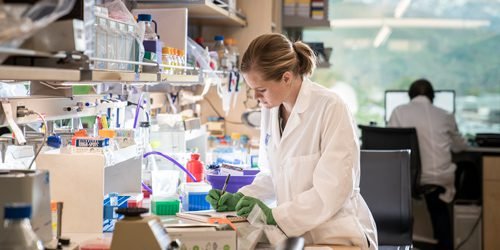Last Updated on March 12, 2024 by admin
Biomarkers play a fundamental role in evaluating the efficacy and safety of new drugs and biological products. As bioanalytical companies increasingly rely on biomarker assay development and validation, FDA has issued strict guidelines to ensure the integrity of the data is maintained. Biomarkers are increasingly used in regulatory decision-making, and hence it is crucial that biomarker development services fully validate an assay keeping in mind the key FDA-issued guidelines.
Table of Contents
FDA guiding principles for a biomarker assay development and validation
A biomarker assay development defines the design, suitability of the methods, operating conditions, and method optimization characteristics. Before a bioanalytical method is developed, the sponsor should adequately understand the candidate of interest and research for any prior bioanalytical methods available.
FDA guidelines recommend that the sponsor should conduct a full validation of the new bioanalytical method validation or revision of an existing one. A sponsor should provide a written description of the bioanalytical method, describing the assay procedures. Moreover, a sponsor should record and report all the experiments performed for supporting or drawing claims or conclusions about biomarker assays.
Parameters of chromatographic assays and ligand-binding assays
FDA recommends appropriate characterization and documentation of the purity, stability, and identity for all critical reagents and reference standards that may include labeled analytes, antibodies, and matrices. For calibration curves, the FDA recommends choosing the calibration standard concentrations and quantitation range, depending on the expected concentration range of the study.
Quality controls assess sample stability and the accuracy and precision of a biomarker assay. During method development, sponsors should freshly prepare quality controls in the same matrix used in the study. To show selectivity and specificity, FDA recommends analyzing blank samples from multiple sources. If the sponsor uses the LC/MS method, it is necessary to provide the data of the effects the sample matrix is going to have on ion-enhancement, ion-suppression, or extraction efficiency.
The “lower level of quantification” defines the assay sensitivity and the FDA recommends that the bioanalytical method should meet the requirements of a study. The sponsor should test the accuracy and precision during the method development process. This evaluation should be across the quantitation range and involve the replication of quality controls at multiple concentrations. FDA guidelines do not need 100% recovery rates, but the extent of the analyte recovery should be consistent across the study.
The sponsor should assess the chemical stability along with the effect collection, handling, and sample storage can have on the analyte. They should evaluate the analyte in the same matrix as that of the study samples. If a sponsor uses diluted samples, FDA recommends validation of the dilution by diluting the quality control sample above the “upper limit of quantification”. The sponsor should use the same dilution factor in both the validation study and the expected clinical study.
Conclusion
FDA guidelines on biomarker assay development and validation is not a legally enforceable responsibility for clinical biomarker service and biomarker validation service providers. Instead, biomarker development services should accept this as the FDA’s current views on biomarker assay development and validation. Unless the FDA cites any statutory or specific regulatory requirements, bioanalytical companies should consider these guidelines only as recommendations and not mandatory in the development and validation of biomarker assays.
Read More:How to Consume Ghee in Routine
